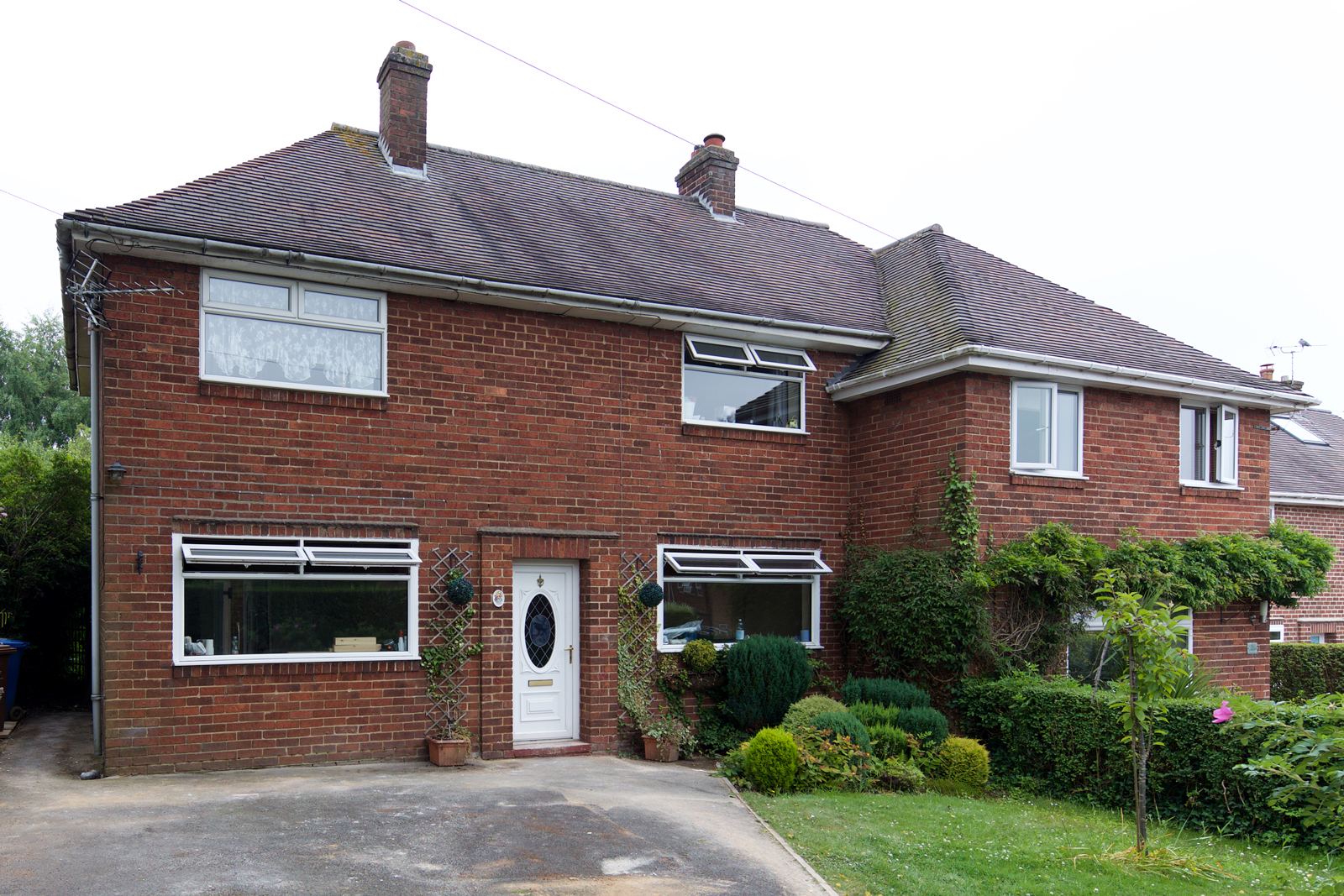Domestic Property, Derby – Eliminating Rising Damp

This domestic property is located in the Derby area. It is a typical semi-detached house that was built during the 1950s. The building is a brick-built cavity wall construction with a solid ground floor.
The Problem
The property owners found damp patches showing along the bottom half of the walls in the living room. There was also significant salt damage that was spoiling the décor, despite attempts to redecorate. Qualified damp expert Paul Walker of the PCA-approved CK Walker was called-in to survey the problem and apply the correct solution.

A thorough survey was completed. Paul found that there was a DPC present in the walls, which would normally stop rising damp from occurring, but it had been bridged in multiple places. On the exterior weather-facing side of the walls, the patio and driveway level had been raised. This caused rain splashback to bridge the DPC, as it fell under the required 150 mm above ground level.
There were also multiple problems on the interior of the property. Parts of the internal solid concrete floor slightly bridged the DPC and the internal plasterwork was touching the floor surface. All of these defects had led to rising damp and salt contamination, which had caused the plasterwork to perish. The plasterwork was even further contaminated because of a fireplace in the room.
The Solution

The ideal solution to the situation would be to lower both the external and internal ground floor level. However, this was not possible due to the extremely high cost. The first step CK Walker took was to hack-off the salt-contaminated plaster and install a new DPC at the correct height relative to the ground level.
For this, Dryzone Damp-Proofing Cream was used. The cream is simply injected into holes drilled at regular intervals on a continuous horizontal mortar course. The water-repellent active ingredient in the cream diffuses along that mortar course before curing to form a barrier to damp.
Paul explains, “We chose Dryzone Damp-Proofing Cream due to its impressive accreditations and the independent testing which has been undertaken on the product. Both of these things give us the confidence in successfully using Dryzone and being able to offer a guarantee to our client”
.

It was then necessary to replaster the wall. Before replastering began, the gap between the floor and the new damp-proof course on the interior side of the wall was coated with Drybase Liquid-Applied DPM to eliminate any bridging of the new plaster coat. The paintable liquid polymer provides a quick-drying barrier to dampness.

The wall was then replastered using Dryzone Damp-Resistant Plaster. The breathable damp and salt-proof plaster is pre-gauged. This means it only needs to be mixed with water before being trowel applied to walls, just like a standard plaster. The resultant plaster surface is warmer and less dense than traditional sand/cement renders and far less prone to misapplication due to poor quality materials or operator error.
Paul details the reasons behind their choice, “We chose Dryzone Damp-Resistant Plaster as it has been designed to deal with salt migration and dampness when a wall is drying down after the installation of a DPC. As it is a pre-mixed product, we can be certain that the correct mix/ratios has been used unlike when we have to mix sand, cement and waterproofing additives together separately”
.

On the fireplace, Vandex BB75 Cementitious Tanking Slurry was used as an undercoat before the application of the plaster, providing an extra barrier to salt contamination. Vandex BB75 forms a strong bond with the surface it is applied to and is able to resist water, even under pressure. It can be applied via trowel or even by brush.
The works carried-out by CK Walker will ensure that the occupants can enjoy their dry property. Paul and his team can also walk away happy in the knowledge that their work will be long-lasting and secure. He states, “Having used Safeguard Europe products for many years now, we have seen the excellent results that their products give and have gained confidence in their use”
.